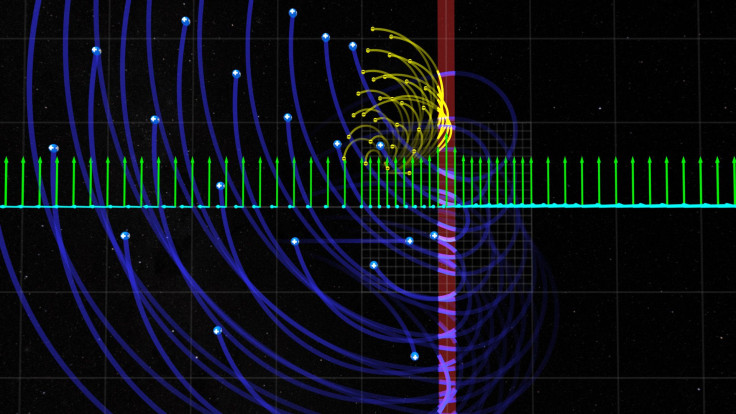NASA Finds High-Energy Electrons Accelerated To Near-Light Speed Just Outside Earth’s Magnetic Field

Every second of every day, Earth is bombarded by streams of charged particles, which are then deflected by the planet’s magnetic field. Typically, when this happens, the particles — fast-moving ions and electrons — either gain energy by bouncing back and forth in across Earth’s bow shock, which forms a protective barrier around the planet, or are slowed down and deflected.
However, a new study published Monday in Physical Review Letters now describes something unexpected.
The study, based on data gathered by NASA satellites, details observations of particles being accelerated in the foreshock region — which lies just beyond Earth’s magnetic field — as a result of some hitherto unknown mechanism.
“This is a puzzling case because we’re seeing energetic electrons where we don’t think they should be, and no model fits them,” study co-author David Sibeck from NASA’s Goddard Space Flight Center in Greenbelt, Maryland, said in a statement. “There is a gap in our knowledge, something basic is missing.”
The observations — made using one of the five satellites that are currently part of NASA’s Time History of Events and Macroscale Interactions during Substorms (THEMIS) mission — reveal that electrons were being accelerated to nearly the speed of light in the foreshock boundary regions. While high-energy particles have previously been observed in this area, this is the first time such particles have been seen originating from within the foreshock region.
“The electrons also could not have originated from the bow shock, as had been previously thought. If the electrons were accelerated in the bow shock, they would have a preferred movement direction and location – in line with the magnetic field and moving away from the bow shock in a small, specific region,” NASA said in the statement. “However, the observed electrons were moving in all directions, not just along magnetic field lines. Additionally, the bow shock can only produce energies at roughly one tenth of the observed electrons’ energies. Instead, the cause of the electrons’ acceleration was found to be within the foreshock region itself.”
So where did these electrons come from? For now, scientists are completely in the dark, and the hope is that further observations from the THEMIS satellites would provide vital clues to this inexplicable behavior.
“It seems to suggest that incredibly small scale things are doing this because the large scale stuff can’t explain it,” lead author Lynn Wilson, also from the Goddard Space Flight Center, said. “This affects pretty much every field that deals with high-energy particles, from studies of cosmic rays to solar flares and coronal mass ejections, which have the potential to damage satellites and affect astronauts on expeditions to Mars.”
© Copyright IBTimes 2025. All rights reserved.






















